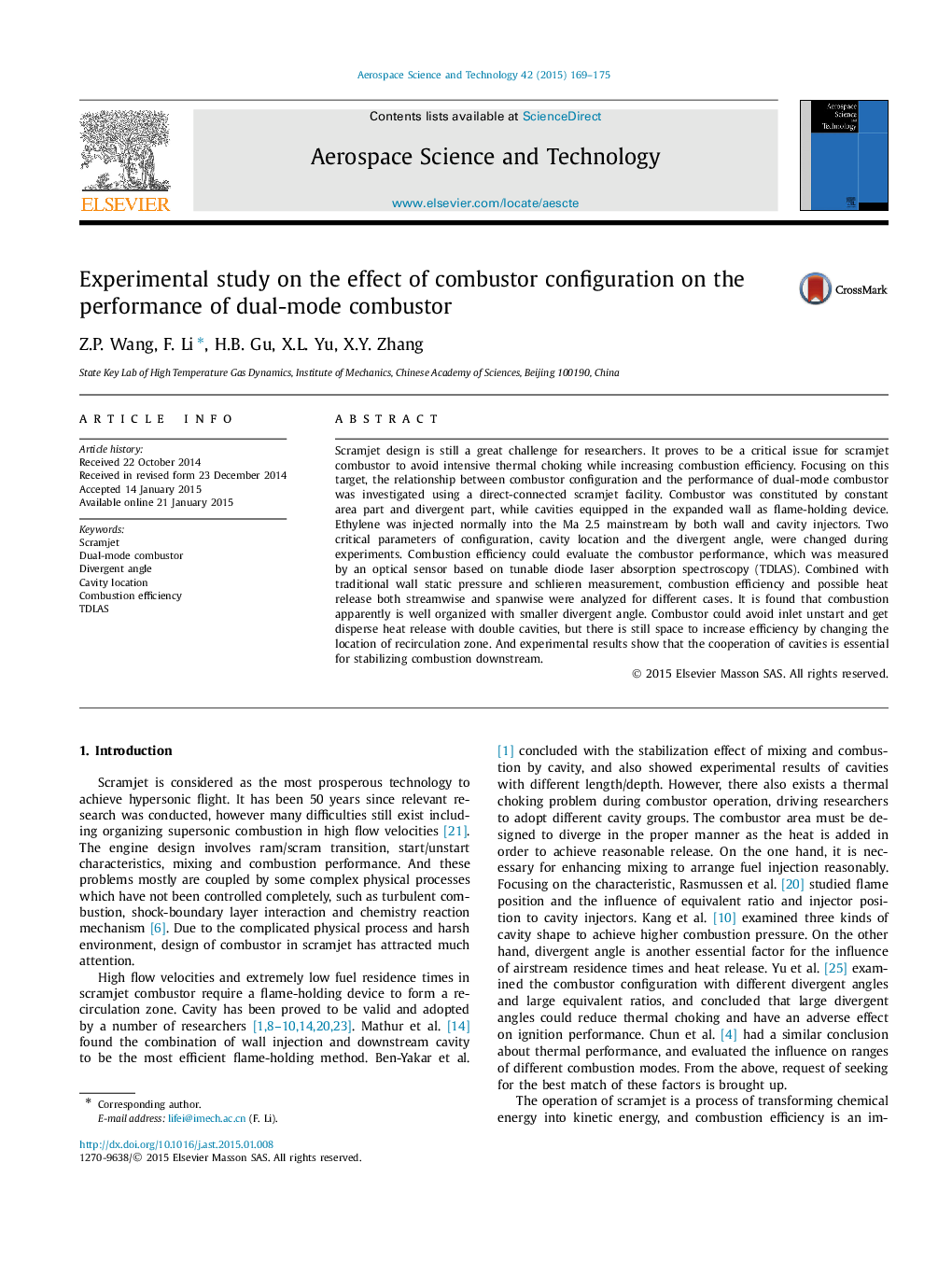| Article ID | Journal | Published Year | Pages | File Type |
|---|---|---|---|---|
| 1717916 | Aerospace Science and Technology | 2015 | 7 Pages |
Scramjet design is still a great challenge for researchers. It proves to be a critical issue for scramjet combustor to avoid intensive thermal choking while increasing combustion efficiency. Focusing on this target, the relationship between combustor configuration and the performance of dual-mode combustor was investigated using a direct-connected scramjet facility. Combustor was constituted by constant area part and divergent part, while cavities equipped in the expanded wall as flame-holding device. Ethylene was injected normally into the Ma 2.5 mainstream by both wall and cavity injectors. Two critical parameters of configuration, cavity location and the divergent angle, were changed during experiments. Combustion efficiency could evaluate the combustor performance, which was measured by an optical sensor based on tunable diode laser absorption spectroscopy (TDLAS). Combined with traditional wall static pressure and schlieren measurement, combustion efficiency and possible heat release both streamwise and spanwise were analyzed for different cases. It is found that combustion apparently is well organized with smaller divergent angle. Combustor could avoid inlet unstart and get disperse heat release with double cavities, but there is still space to increase efficiency by changing the location of recirculation zone. And experimental results show that the cooperation of cavities is essential for stabilizing combustion downstream.
